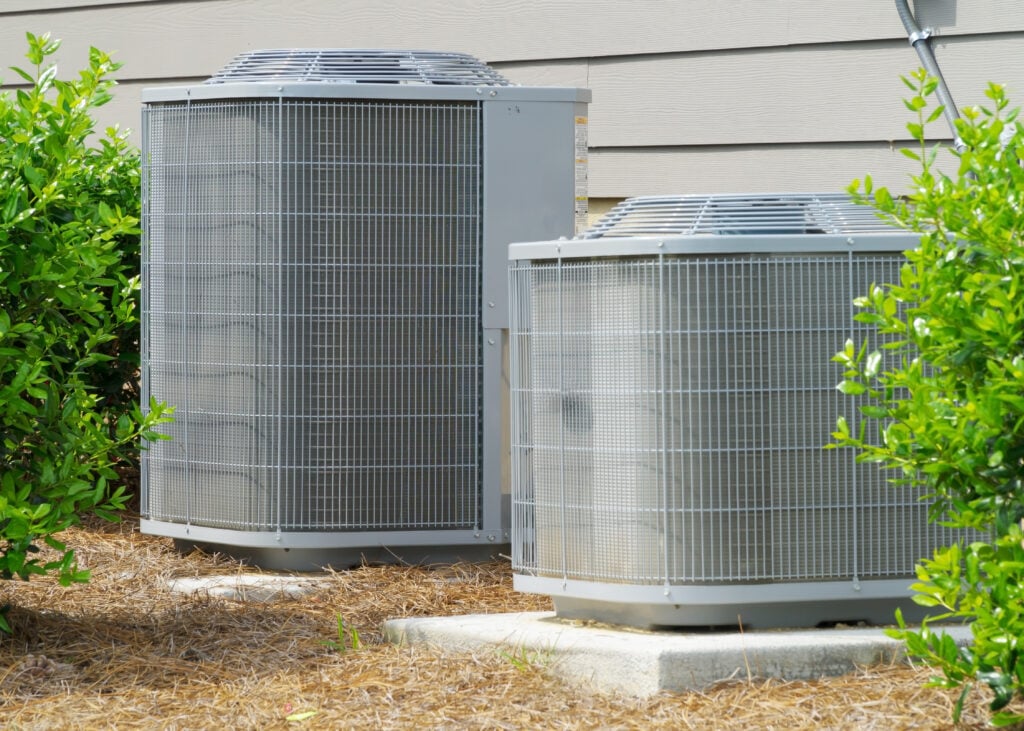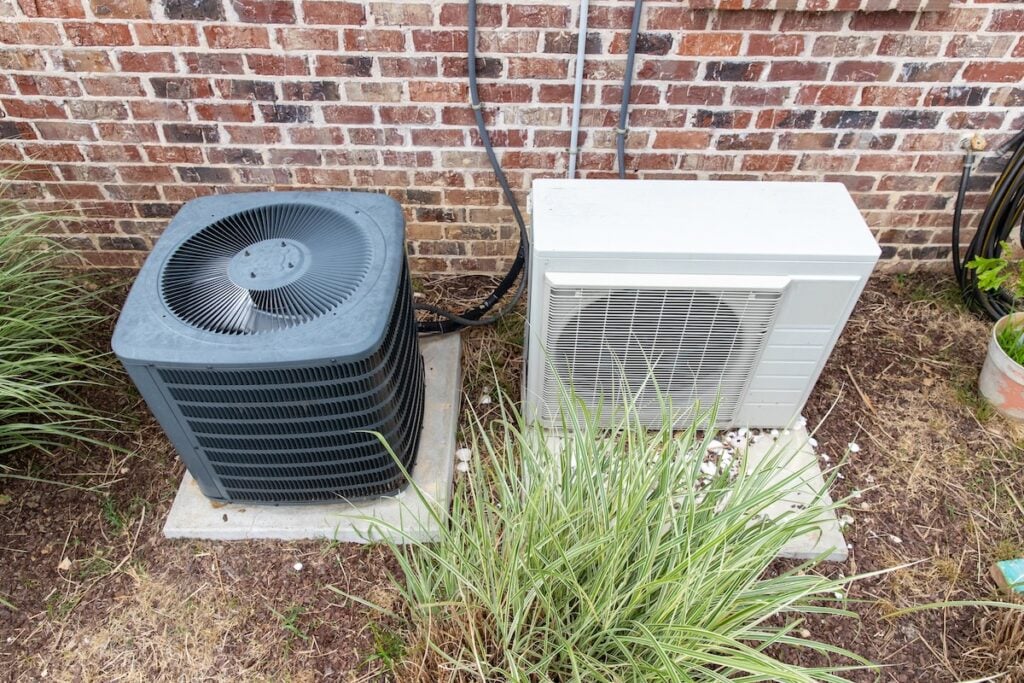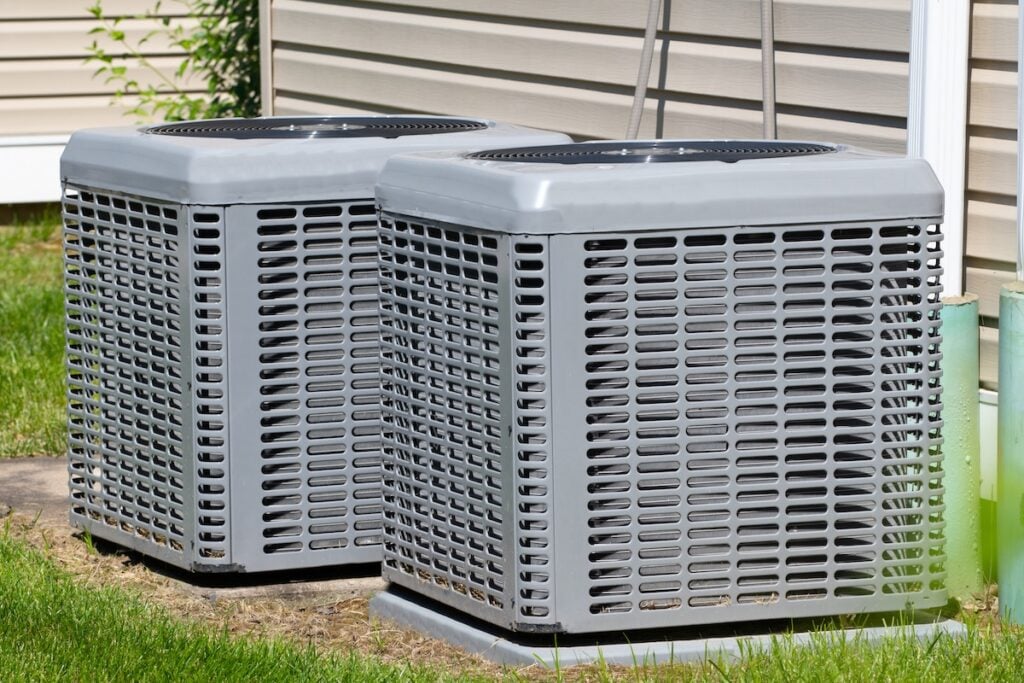Mini Split vs Central Air: What Are The Differences?
Choosing between a mini split and central air system is one of the most important decisions you’ll make for your home’s comfort. Both systems have their unique advantages, and understanding the differences can help you select the best option for your specific needs and budget.
We’ll examine how each system works, their pros and cons, and which situations favor one over the other. By the end of this article, you’ll have a clear understanding of which cooling and heating solution is right for your home.
Here’s what we’ll cover:
- Mini split vs central air systems
- 7 key differences between mini split and central air
- Which system is right for your home?
- Maintenance and longevity
👉 Mini Split Systems vs. Central Air Systems

Understanding the difference between mini split systems and central air systems is key to choosing the right cooling solution for your home. The right system can impact energy efficiency, comfort, and long-term costs.
Mini Split Systems (Ductless)
- Consist of an outdoor condenser unit and one or more indoor air-handling units.
- Require no ductwork, making them ideal for homes without existing ducts or specific room climate control.
- Connected by a small conduit that carries refrigerant lines, a power cable, and a condensate drain.
- Provide both heating and cooling with heat pump technology:
- In summer: Remove heat from inside and transfer it outside.
- In winter: Extract heat from outdoor air and bring it inside.
- Offer flexible installation and individual room temperature control.
Central Air Systems (Ducted)
- Use a network of ducts to distribute cooled air throughout the home from a single outdoor unit.
- Components include an outdoor condenser, an indoor evaporator coil, and a blower to circulate air.
- Refrigerant absorbs heat inside the home and releases it outside.
- Blower pushes cooled air through supply ducts and pulls warm air back through return ducts.
- Works with existing heating systems, using shared ductwork and blower, making it ideal for homes with established HVAC infrastructure..
7 Key Differences Between Mini Split and Central Air Conditioning

Understanding the differences between mini split and central air conditioning helps you choose the best cooling system for your home. Making the right decision can save you money, improve energy efficiency, and enhance comfort.
1. Installation Requirements and Complexity
Mini split installation is generally simpler and less invasive than central air. The process involves mounting the indoor unit on a wall or ceiling, placing the outdoor unit on a concrete pad or wall bracket, and connecting them with a small conduit through a three-inch hole in the wall.
Central air installation requires extensive ductwork if your home doesn’t already have it. This involves running ducts through walls, floors, and ceilings, which can be disruptive and expensive. Homes with existing ductwork have a significant advantage, as installation primarily involves connecting the new outdoor unit to the existing system.
The installation timeline also differs significantly. Mini splits can often be installed in a single day, while central air installation with new ductwork can take several days or even weeks, depending on your home’s layout and complexity.
2. Energy Efficiency and Operating Costs
Mini splits typically offer superior energy efficiency compared to central air systems. They avoid the energy losses associated with ductwork, which can account for 20-30% of cooling costs in central systems. Additionally, mini splits use inverter technology that adjusts compressor speed based on demand, reducing energy consumption.
Central air systems lose efficiency through ductwork, especially if ducts are located in unconditioned spaces like attics or crawl spaces. However, modern central air systems with properly sealed and insulated ducts can still achieve good efficiency ratings.
The ability to cool only occupied rooms gives mini splits another efficiency advantage. Instead of cooling your entire home, you can operate only the zones you’re using, leading to additional energy savings.
3. Cooling and Heating Capacity
Central air systems excel at cooling large homes quickly and maintaining consistent temperatures throughout. They can handle higher cooling loads and are better suited for open floor plans where even temperature distribution is important.
Mini splits work best for targeted cooling and heating of specific zones. While multi-zone systems can serve entire homes, they’re most effective in smaller to medium-sized homes or when used to supplement existing HVAC systems.
For heating, mini split heat pumps can provide efficient warmth in moderate climates but may struggle in extremely cold temperatures. Central air systems paired with furnaces or heat pumps can handle more severe weather conditions.
4. Cost Considerations
Mini split systems typically have lower upfront costs, especially single-zone units. Installation is less expensive due to the simpler process and lack of ductwork requirements. However, multi-zone systems can become costly as you add more indoor units.
Central air systems have higher upfront costs, particularly if ductwork installation is required. The complex installation process and extensive labor requirements contribute to higher initial expenses. However, they may offer better long-term value for large homes.
Operating costs favor mini splits due to their higher efficiency and zoning capabilities. Central air systems may have higher monthly energy bills but can be more cost-effective for cooling entire homes simultaneously.
5. Maintenance Requirements
Mini splits require regular cleaning of filters and occasional professional maintenance. Each indoor unit has its own filter that needs cleaning monthly during heavy use. The outdoor unit requires periodic cleaning and inspection.
Central air systems need filter changes, duct cleaning, and regular professional maintenance. The complexity of the ductwork system means more potential points of failure and maintenance requirements. However, having a single system to maintain can be more convenient than multiple mini split units.
Professional maintenance for mini splits involves checking refrigerant levels, cleaning coils, and inspecting electrical connections for each unit. Central air maintenance focuses on the single outdoor unit, indoor coil, and ductwork system.
6. Aesthetic and Space Considerations
Mini splits require wall-mounted or ceiling-mounted indoor units in each room, which some homeowners find visually intrusive. While modern units are sleeker and more attractive than older models, they’re still visible design elements.
Central air systems are largely invisible, with only supply and return vents visible in each room. This clean appearance appeals to homeowners who prefer minimal visual impact from their HVAC system.
The outdoor units also differ in appearance and placement. Mini splits may require multiple outdoor units for multi-zone systems, while central air uses a single, typically larger outdoor unit.
7. Noise Levels
Mini splits operate quietly, with indoor units producing minimal sound. The outdoor units are also generally quieter than central air condensers, making them suitable for noise-sensitive areas.
Central air systems can be noisier due to the blower and ductwork. Air movement through ducts can create whooshing sounds, and the blower itself generates noise. However, proper installation and maintenance can minimize these issues.
The location of noise sources also differs. Mini splits produce sound at each indoor unit location, while central air noise comes from the outdoor unit and central air handler location.
🤔 Which System Is Right for Your Home?

Several factors should influence your decision between mini split vs central air systems. Consider your home’s size, existing infrastructure, budget, and comfort preferences.
When to Choose Mini Splits
- Ideal for smaller homes or spaces without existing ductwork
- Perfect for individual room control or cooling specific areas
- Great for home additions, converted spaces, or supplementing existing HVAC systems
When to Select Central Air
- Best for larger homes with existing ductwork
- Offers invisible operation and consistent temperatures throughout
- Suitable for high cooling demands, open floor plans, and new construction
Consider Climate
- Mini splits are effective in moderate climates for heating and cooling
- Central air combined with proper heating systems handles extreme conditions better
Budget and Timeline
- Mini splits have lower upfront costs but can be pricier for whole-home coverage
- Central air requires higher initial investment but offers better long-term value for large homes
🛠️ Maintenance and Longevity
Both systems require regular maintenance to operate efficiently and ensure they last their expected lifespan:
- Mini splits: typically last 15-20 years with proper maintenance.
- Central air systems: can last 15-25 years with proper maintenance.
Mini Split Maintenance:
- Clean filters monthly.
- Keep outdoor units clear of debris.
- Schedule annual professional service.
- Each indoor unit requires individual attention, which can be more time-consuming for multi-zone systems.
Central Air Maintenance:
- Regular filter changes.
- Annual professional service.
- Periodic duct cleaning.
- Centralized system makes maintenance more convenient, though ductwork adds complexity.
Professional Maintenance for Both Systems:
- Refrigerant level checks.
- Electrical connection inspection.
- Coil cleaning.
- Mini splits: require attention to multiple indoor units.
- Central air: focuses on the single outdoor unit and indoor components.
👨🔧 Why Choose Panther Heating & Cooling for Your HVAC Needs
At Panther Heating & Cooling, we understand that choosing between mini split vs central air systems is a significant decision for your home and family. Our NATE-certified technicians have extensive experience with both systems and can help you make the best choice for your specific situation.
Don’t leave your home’s comfort to chance. Contact Panther Heating & Cooling today to schedule a consultation and discover which HVAC solution is right for your home. Our experienced technicians are ready to help you achieve year-round comfort and energy efficiency.
